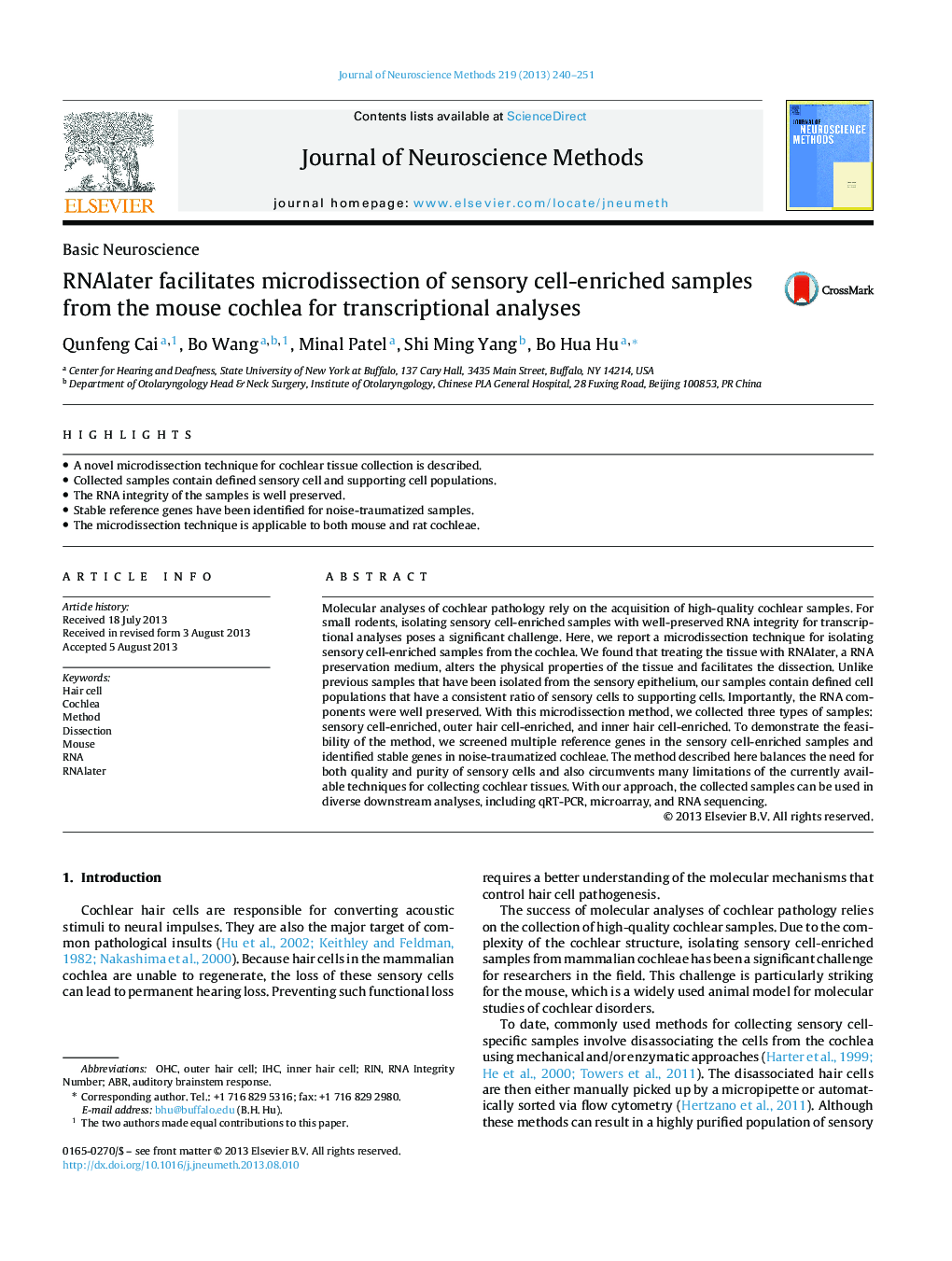| Article ID | Journal | Published Year | Pages | File Type |
|---|---|---|---|---|
| 6268957 | Journal of Neuroscience Methods | 2013 | 12 Pages |
â¢A novel microdissection technique for cochlear tissue collection is described.â¢Collected samples contain defined sensory cell and supporting cell populations.â¢The RNA integrity of the samples is well preserved.â¢Stable reference genes have been identified for noise-traumatized samples.â¢The microdissection technique is applicable to both mouse and rat cochleae.
Molecular analyses of cochlear pathology rely on the acquisition of high-quality cochlear samples. For small rodents, isolating sensory cell-enriched samples with well-preserved RNA integrity for transcriptional analyses poses a significant challenge. Here, we report a microdissection technique for isolating sensory cell-enriched samples from the cochlea. We found that treating the tissue with RNAlater, a RNA preservation medium, alters the physical properties of the tissue and facilitates the dissection. Unlike previous samples that have been isolated from the sensory epithelium, our samples contain defined cell populations that have a consistent ratio of sensory cells to supporting cells. Importantly, the RNA components were well preserved. With this microdissection method, we collected three types of samples: sensory cell-enriched, outer hair cell-enriched, and inner hair cell-enriched. To demonstrate the feasibility of the method, we screened multiple reference genes in the sensory cell-enriched samples and identified stable genes in noise-traumatized cochleae. The method described here balances the need for both quality and purity of sensory cells and also circumvents many limitations of the currently available techniques for collecting cochlear tissues. With our approach, the collected samples can be used in diverse downstream analyses, including qRT-PCR, microarray, and RNA sequencing.
